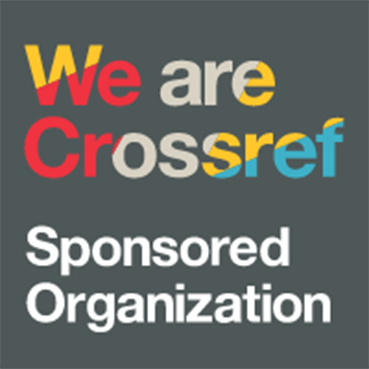Relevansi Adat Istiadat Gayo Lues dalam Konteks Perubahan Sosial: Perspektif Generasi Muda
DOI:
https://doi.org/10.47766/almabhats.v8i1.543Keywords:
Cultural Identity , Gayo Lues Tribe , Preventive Assimilation, Relevance of Customs , Social ChangeAbstract
Abstract: The aim of this study is to analyze the phenomenon of the relevance of the traditional customs of the Gayo Lues Tribe in the context of social change from the perspective of the younger generation. Within a sociological framework, these customs are interpreted as obligations that serve as a significant foundation in the decision-making process to resolve social issues. This research utilizes a qualitative method, with a literature review approach. The data collected through this process is then analyzed descriptively, analytically, historically, and comparatively. The findings reveal a gap in the younger generation's understanding of the traditional customs of the Gayo tribe in Aceh. Despite this, the younger generation plays a vital role in preserving cultural identity and the continuity of traditional customs and requires preventive assimilation. Furthermore, the renewal and adaptation of customs are necessary for the younger generation to maintain their relevance in a modern context. The research also explores contemporary challenges in the changes in values and norms experienced by the younger generation, which potentially threaten the relevance of traditional customs. The implications of the research involve establishing a dialogue to reach a consensus among the younger generation, the older generation, and traditional leaders. Abstrak: Penelitian ini bertujuan untuk menganalisis fenomena relevansi adat istiadat Suku Gayo Lues dalam konteks perubahan sosial perspektif generasi muda. Dalam kerangka sosiologis, adat istiadat diinterpretasikan sebagai kewajiban yang menjadi landasan penting dalam proses pengambilan keputusan untuk menyelesaikan masalah sosial. Penelitian ini menggunakan metode kualitatif, dengan pendekatan penelitian kepustakaan. Data yang dikumpulkan melalui proses ini kemudian dianalisis secara deskriptif, analitis, historis, dan komparatif. Hasil penelitian mengungkap kesenjangan pemahaman adat istiada pada generasi muda Suku Gayo di Aceh. Meski demikian generasi muda berperan penting dalam mempertahankan identitas budaya dan kesinambungan adat istiadat dan membutuhkan asimilasi preventif. Selain itu diperlukan pembaharuan dan adaptasi adat istiadat, generasi muda dapat menjaga relevansinya dalam konteks modern. Penelitian juga mengeksplorasi tantangan kontemporer pada perubahan nilai dan norma yang dialami oleh generasi muda, yang berpotensi mengancam relevansi adat istiadat. Penelitian berimplikasi membentuk dialog untuk mencapai konsensus antara generasi muda, generasi yang lebih tua, dan tokoh adat.References
Ahyar, A. (2018). Perlindungan Hukum Hak atas Tanah Adat (Studi Kasus di Provinsi Aceh Khususnya Kabupaten Bener Meriah). Jurnal Penelitian Hukum De Jure, 18(3), 289. https://doi.org/10.30641/dejure.2018.V18.289-304
Arfiansyah, A. (2021). Contemporary Changes and Uses of Adat in Gayo Society, Indonesia. Heritage of Nusantara: International Journal of Religious Literature and Heritage, 10(1), 32–63. https://doi.org/10.31291/hn.v10i1.620
Bowen, J. R. (1988). The Transformation of an Indonesian Property System: Adat , Islam, and Social Change in the Gayo Highlands. American Ethnologist, 15(2), 274–293. https://doi.org/10.1525/ae.1988.15.2.02a00050
Fasya, T. K. (2018). Egalitarianisme Gayo Sebuah Inisiatif Antropologi Sosial dan Etnografi Politik. Aceh Anthropological Journal, 2(2), 1. https://doi.org/10.29103/aaj.v2i2.1155
Fincher, T. (2010). Regional Autonomy as a Counterinsurgency Tool for Democratizing States: Case Studies from Aceh, Papua, and Mindanao. Georgetown University.
Gfeller, A. E. (2015). Anthropologizing and indigenizing heritage: The origins of the UNESCO Global Strategy for a representative, balanced and credible World Heritage List. Journal of Social Archaeology, 15(3), 366–386. https://doi.org/10.1177/1469605315591398
Green, A. (2013). A Geography of Peace: an Investigation of Post-Conflict Property and Land Administration in Aceh.
Hakim, H., Rahmadhani, E., & Wahyuni, S. (2020). Ethnomathematical Study: Creating Math to Students with Gayo Culture. Journal of Physics: Conference Series, 1462(1), 012068. https://doi.org/10.1088/1742-6596/1462/1/012068
Hasibuan, E. J., & Muda, I. (2018). Komunikasi Antar Budaya pada Etnis Gayo dengan Etnis Jawa. JURNAL SIMBOLIKA: Research and Learning in Communication Study, 3(2), 106. https://doi.org/10.31289/simbollika.v3i2.1456
Hayati, E. (2018). The Procession and Meaning of Sengen Tradition in Gayo Lues Society. Proceedings of the Annual Civic Education Conference (ACEC 2018). https://doi.org/10.2991/acec-18.2018.128
Houben, V. (2015). Islam and the Perception of Islam in Contemporary Indonesia. Heidelberg Ethnology, 3(1). https://doi.org/10.11588/hdethn.0.0.25362
Hugo, M. (2007). Six Months in Aceh. Australasian Psychiatry, 15(2), 140–143. https://doi.org/10.1080/10398560701196760
Kasmawati, Purwaningrum, L., Widyastuti, T., & Handayani, S. R. (2021). Tape as a Symbol of Luxury and Respect of Gayo Community. Journal of Physics: Conference Series, 1842(1), 012010. https://doi.org/10.1088/1742-6596/1842/1/012010
Labadi, S. (2017). Representations of the Nation and Cultural Diversity in Discourses on World Heritage. Journal of Social Archaeology, 7(2), 147–170. https://doi.org/10.1177/1469605307077466
Misran, M. (2020). Eksistensi Hukum Adat Gayo dalam Menyelesaikan Perkara di Kutacane Aceh Tenggara. LEGITIMASI: Jurnal Hukum Pidana Dan Politik Hukum, 9(1), 67. https://doi.org/10.22373/legitimasi.v9i1.7327
MN, J. (2019). Kajian Norma Adat Gayo dalam Filsafat Manusia. Balai Pelestarian Nilai Budaya Aceh, Direktorat Jenderal Kebudayaan.
Nas, P. J. M., Iwabuchi, A., & ... (2008). Aceh, Gayo and Alas: Traditional house forms in the Special Region of Aceh. In Indonesian Houses (pp. 17–47). BRILL. https://doi.org/10.1163/9789004253988_003
Nurrahmi, F. (2018). The Construction of Acehnese Identity in Serambi Indonesia after the Helsinki Memorandum of Understanding. Talenta Conference Series: Local Wisdom, Social, and Arts (LWSA), 1(2), 354–361. https://doi.org/10.32734/lwsa.v1i2.207
Park, C.-M., Han, Y., & Chang, Y. (2022). Civil Service Systems in East and Southeast Asia. Routledge. https://doi.org/10.4324/9781003326496
Ratnawati, F. (2021). Gayo Sang Pemikat. Guepedia.
Rico, T. (2014). The limits of a ‘heritage at risk’ framework: The construction of post-disaster cultural heritage in Banda Aceh, Indonesia. Journal of Social Archaeology, 14(2), 157–176. https://doi.org/10.1177/1469605314527192
Stark, L., Bancroft, C., Cholid, S., Sustikarini, A., & Meliala, A. (2012). A Qualitative Study of Community-Based Child Protection Mechanisms in Aceh, Indonesia. Vulnerable Children and Youth Studies, 7(3), 228–236. https://doi.org/10.1080/17450128.2012.663947
Sukiman, S. (2021). The Ecological Theology of the Indonesian Gayo Tribe: The Integration of Tawhīd Values into their Trade Tradition. Afkaruna: Indonesian Interdisciplinary Journal of Islamic Studies, 17(2), Layouting. https://doi.org/10.18196/afkaruna.v17i2.11520
Vignato, S. (2012). Devices of Oblivion: How Islamic Schools Rescue ‘Orphaned’ Children from Traumatic Experiences in Aceh (Indonesia). South East Asia Research, 20(2), 239–261. https://doi.org/10.5367/sear.2012.0107
Zulkarnain, Z. (2019). Maango: Pendidikan Masyarakat Negeri Gayo Dalam Hasanah Syari’at Islam dan Adat. Edukasia : Jurnal Penelitian Pendidikan Islam, 13(2). https://doi.org/10.21043/edukasia.v13i2.3586
Downloads
Published
How to Cite
Issue
Section
License
Copyright (c) 2023 Al Mabhats : Jurnal Penelitian Sosial Agama

This work is licensed under a Creative Commons Attribution-ShareAlike 4.0 International License.






